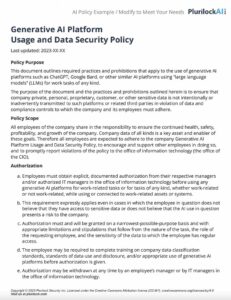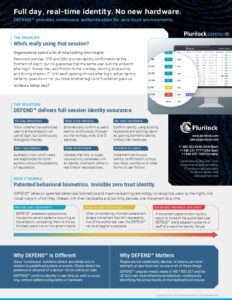In the ever-evolving landscape of cybersecurity, one concept stands out as both crucial and elusive: attribution. At its core, attribution seeks to uncover the digital footprints left behind by cybercriminals, allowing security experts to identify and attribute cyberattacks to specific individuals, groups, or nation-states. This pursuit of tracing the origins of cyber threats is akin to a digital detective work, often accompanied by challenges, controversies, and significant implications. In this deep dive, we will explore what attribution in cybersecurity entails, delve into its importance, and provide an in-depth analysis of the complexities and significance it holds in the realm of digital security.
Understanding Attribution: Unmasking the Culprits
Attribution Defined: Attribution in cybersecurity refers to the process of determining the true source or origin of a cyberattack, whether it is a data breach, malware deployment, or a hacking incident. The goal is to connect the dots between the actions taken in the virtual realm and the real-world entities responsible for those actions.
Techniques and Indicators: Attribution relies on a combination of technical, behavioral, and contextual indicators. Technical indicators include IP addresses, malware code analysis, and infrastructure characteristics. Behavioral indicators encompass tactics, techniques, and procedures (TTPs) used by threat actors, while contextual indicators involve geopolitical factors, motives, and historical patterns.
The Attribution Challenge: While the idea of attributing cyberattacks seems straightforward, it is a complex and multifaceted task. Attackers employ a variety of techniques to obfuscate their identities, including using anonymization tools, compromised infrastructure, and false flags. Moreover, the interconnected and borderless nature of the internet adds to the difficulty of tracing back attacks to their origins.
Why Attribution Matters: Significance and Implications
Deterrence and Accountability: Attribution serves as a deterrence mechanism. By identifying and publicly attributing cyberattacks to specific individuals or groups, the cybersecurity community, law enforcement, and governments send a clear message that malicious activities will not go unnoticed or unpunished. This can dissuade potential attackers from carrying out their plans, knowing that there is a higher likelihood of facing consequences.
Strategic Responses: Attribution enables targeted and effective responses to cyber threats. When the responsible parties are known, governments and organizations can take appropriate diplomatic, legal, or technical measures. These actions may include economic sanctions, criminal charges, or even counter-cyber operations.
Fostering Cyber Norms: Attribution contributes to the establishment of norms and rules for behavior in cyberspace. As the international community gains a better understanding of the actors behind cyberattacks, it becomes possible to define acceptable behavior and engage in discussions about responsible state behavior in the digital realm.
Public Awareness and Transparency: Publicly attributing cyber incidents educates the public and the industry about the evolving threat landscape. It promotes transparency, enabling individuals and organizations to understand the nature of the attack and take necessary precautions to defend against similar threats in the future.
In-Depth Analysis: Complexities and Significance of Attribution
The Problem of False Flags: False flags are deliberate attempts by threat actors to mislead investigators by attributing their actions to others. This raises a fundamental question: How can one be certain about the true origin of an attack? The presence of false flags requires a meticulous analysis of technical evidence, behavior patterns, and motives to distinguish genuine attribution from misleading claims.
Geopolitical and Diplomatic Implications: Attribution often takes on a geopolitical dimension. When attacks are attributed to nation-states, they can strain international relations and raise diplomatic tensions. Accusations of state-sponsored attacks can lead to trade disputes, sanctions, or even cyber retaliation. The Stuxnet incident, where a sophisticated cyberattack targeted Iran’s nuclear facilities, demonstrated the delicate balance between covert operations and potential repercussions.
Technical and Legal Challenges: The technical challenges of attribution are considerable. Cybercriminals use various techniques to conceal their identity, such as routing their activities through multiple compromised systems, employing encryption, and using anonymization tools like Tor. This makes it difficult to trace back to the original source with certainty. Additionally, the global nature of cybercrime introduces jurisdictional and legal hurdles, as different countries have varying laws and regulations related to cyberattacks.
The Role of Private Sector: Private cybersecurity firms often play a significant role in attributing cyber incidents. They possess advanced tools, techniques, and a vast dataset of historical attacks. However, their involvement raises ethical concerns regarding potential conflicts of interest, the accuracy of their findings, and the possibility of influencing public opinion or policy decisions.
Case Studies: Real-World Attribution Challenges
APT28 (Fancy Bear): APT28, a notorious Russian state-sponsored hacking group, has been implicated in various high-profile cyberattacks, including the Democratic National Committee (DNC) breach during the 2016 U.S. presidential election. While technical indicators pointed to Russian involvement, the attribution process also required contextual analysis of motives and geopolitical factors.
WannaCry Ransomware: The WannaCry ransomware attack in 2017 affected hundreds of thousands of computers worldwide. While some indicators suggested North Korean involvement, the precise attribution remained challenging due to the use of code similarities with other malware and the possibility of false flags.
NotPetya Malware: The NotPetya malware outbreak in 2017 highlighted the risks of inaccurate attribution. Initially believed to be a ransomware attack, further analysis revealed that it was a wiper malware designed to cause destruction. While Ukraine was initially blamed, subsequent investigations pointed towards Russian state-sponsored actors.
Conclusion: The Pursuit of Digital Justice
Attribution in cybersecurity is a nuanced and intricate process that involves a blend of technical analysis, behavioral profiling, and contextual understanding. It serves as a cornerstone for deterrence, accountability, and strategic responses in the digital age. While challenges persist, including false flags and geopolitical complexities, the progress made in attributing cyber incidents cannot be understated.
As the cyber threat landscape evolves, attribution will remain pivotal in shaping norms, fostering transparency, and deterring malicious actors. It is a pursuit of digital justice, where the footprints left in the virtual realm lead to real-world consequences. As technology advances and threat actors refine their tactics, the cybersecurity community’s ability to attribute cyberattacks will continue to be a critical factor in maintaining the security and stability of the digital world.












